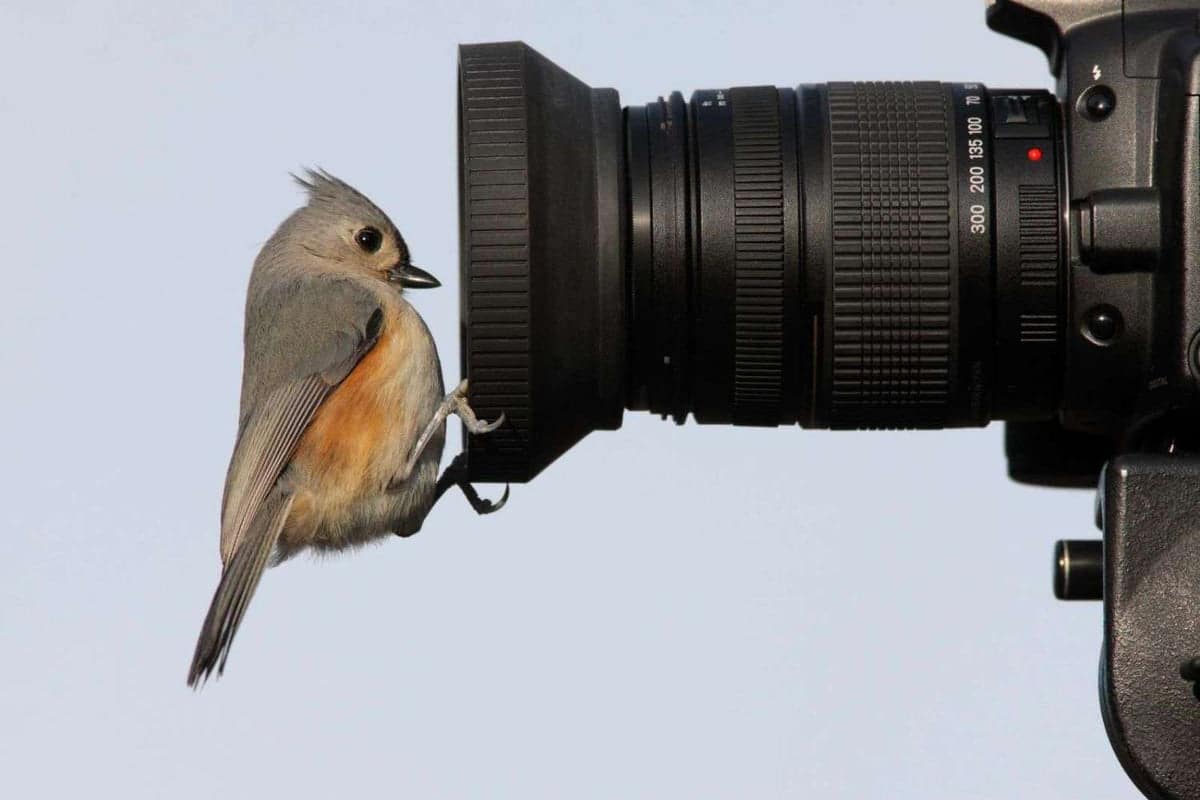When it comes to bird videography and photography, the camera you choose can make or break your experience. It’s not just about the thrill of capturing that perfect shot; it’s about the joy of being one with nature, observing the majestic flight of a bird, and preserving that moment forever. And for that, you need a camera that’s as swift and focused as the subjects you’re aiming to capture.
Whether you’re a seasoned pro or just starting out, understanding what to look for in a camera can be daunting. But fear not, because I’m here to guide you through the features and cameras that will help you take your bird videography and photography to new heights in 2024.
Key Takeaways
-
The best cameras for bird videography and photography combine fast autofocus, high frame rates, and excellent image quality.
-
Entry-level, mid-range, and professional options cater to different budgets and skill levels.
-
Essential accessories like the right lenses and tripods can enhance your birding experience.
-
Understanding camera settings and mastering techniques will improve your chances of capturing stunning bird imagery.
-
Continuous learning and practice are key to excelling in bird videography and photography.
Why the Right Camera Matters
Imagine you’re in the wild, and a rare bird takes flight. This is the moment you’ve been waiting for, and it’s fleeting. A camera with a slow autofocus or a sluggish frame rate can mean the difference between a blurry memory and a crisp, vibrant image that brings your experience to life for others to see. That’s why the right camera matters—it’s your tool to freeze time and share the beauty of our feathered friends with the world.

“Top 10 Bird Feeder Cameras for 2024 …” from www.katebackdrop.com and used with no modifications.
Key Camera Features for Bird Videography and Photography
So, what makes a camera ideal for bird videography and photography? Let’s break it down:
-
Autofocus: It must be lightning-fast to track birds in motion.
-
Frame Rate: High frame rates ensure you don’t miss a beat in the bird’s movement.
-
Image Quality: Look for high resolution and excellent color reproduction.
-
Portability: Lightweight and durable for those long treks into the wilderness.
-
Battery Life: Long-lasting to keep you shooting from dawn till dusk.
With these features in mind, let’s explore the cameras that stand out in 2024.
Top Camera Models of 2024
Best Entry-Level Cameras
Starting with entry-level cameras, these are perfect for those who are new to birding or on a tighter budget but still want quality results. Here are a couple of models that are user-friendly and deliver great performance:
-
Canon EOS R10: It’s compact, has a solid autofocus system, and is compatible with a range of lenses that are perfect for birding.
-
Sony A6000 Series: Known for its fast autofocus and continuous shooting, this series remains a favorite for beginners.
Best Mid-Range Cameras
Moving up to mid-range cameras, these offer a balance between advanced features and affordability:
-
Sony A7 IV: With impressive autofocus capabilities and high-resolution video, it’s a strong contender for serious enthusiasts.
-
Nikon Z6 II: Offering superb image quality and fast shooting speeds, it’s a versatile choice for bird photography.
Best Professional Cameras
For the pros and those who demand the absolute best, professional cameras provide top-of-the-line specs for unmatched results:
-
Canon EOS R5: With its rapid-fire shooting and high-resolution sensor, the R5 is a powerhouse for birding photography.
-
Nikon Z 9: It’s a mirrorless marvel with blazingly fast shooting speeds and a robust build, ideal for the rigors of wildlife photography.
But remember, the best camera is the one that meets your specific needs. It’s about finding the right balance between features and usability, so you can focus on the joy of capturing those beautiful avian moments.
Nikon Z 9
When it comes to professional bird photography, the Nikon Z 9 stands out with its exceptional speed and accuracy. Boasting a sophisticated autofocus system that can track even the fastest-moving birds, the Z 9 ensures you capture every detail in stunning clarity. Its robust build can withstand the elements, making it an excellent companion for outdoor adventures. With up to 20 frames per second at full resolution, you won’t miss a single flap of wings. The Z 9 is a testament to Nikon’s commitment to combining speed, precision, and durability.
Sony A1
The Sony A1 is another top-tier choice for bird videography and photography. It’s a testament to Sony’s innovation in the mirrorless camera market, offering a groundbreaking 50.1-megapixel sensor that delivers high-resolution images without compromising on speed. With up to 30 frames per second continuous shooting and advanced real-time Eye AF for birds, the A1 is designed to capture the most fleeting moments in nature. Its 8K video capabilities also mean that videographers can enjoy unprecedented detail in their footage, bringing viewers up close and personal with wildlife.
Essential Accessories for Bird Videography and Photography
Having the right camera is just the beginning. To truly elevate your bird videography and photography, you’ll need some essential accessories that complement your camera’s capabilities. Let’s delve into the gear that will help you get the most out of your birding expeditions.
Top Lenses for Bird Photography
A good lens is crucial for capturing sharp, detailed images of birds. It’s not just about the magnification; it’s about the quality of the glass and the speed of the autofocus. Here are some of the top lenses that bird photographers swear by:
-
Canon RF 100-500mm F4.5-7.1L IS USM: Offers a versatile zoom range and superior image stabilization.
-
Sigma 150-600mm f/5-6.3 DG OS HSM | C: A great value lens with impressive reach and optical stabilization.
-
Nikon AF-S NIKKOR 500mm f/5.6E PF ED VR: Exceptionally sharp and lightweight for its focal length, perfect for handheld shooting.
Choosing the right lens depends on your camera system and your specific needs. Consider factors like weight, image stabilization, and weather sealing when making your selection.
Tripods and Stabilization Gear
Stability is key when it comes to bird photography. A sturdy tripod or monopod can make all the difference in getting a clear shot, especially with long lenses that are prone to camera shake. Look for tripods that are lightweight yet durable, with smooth heads for panning and tracking birds in flight. Monopods offer greater mobility if you’re on the move, while gimbal heads provide the ultimate flexibility for tracking moving subjects.
Gimbal heads, in particular, are a favorite among bird photographers for their ability to balance heavy lenses and provide fluid motion. Brands like Wimberley and Manfrotto are renowned for their high-quality stabilization gear.
Field Protective Gear
Protecting your gear is just as important as choosing the right camera and lens. Weather can be unpredictable, and outdoor environments can be harsh on your equipment. Invest in protective covers for your camera and lens, and consider a sturdy bag that can withstand the elements. Waterproof and dustproof cases are also a smart investment, especially if you’re planning to shoot in challenging conditions.
Tips and Techniques for Bird Videography and Photography
“The secret to successful bird photography is not just in the gear, but in the patience and skill of the photographer. Know your subject, understand its behavior, and be ready to capture the decisive moment.”
Knowing your camera’s settings is crucial for adapting to the fast-paced world of bird photography. You’ll often need to adjust settings on the fly, so familiarize yourself with your camera’s controls and menus. For those looking to upgrade their equipment, reviewing the best cameras for birding photography in 2024 can provide valuable insights into the latest gear optimized for this challenging hobby.
Use continuous autofocus (AF-C) mode to keep moving birds in focus, and set your camera to high-speed continuous shooting to increase your chances of capturing the perfect shot. Experiment with different exposure modes, but remember that shutter priority mode can be particularly useful for controlling motion blur.
And don’t forget about the light. The golden hours of sunrise and sunset provide beautiful, soft light that can add drama and color to your images. Positioning yourself with the sun behind you will illuminate your subject and bring out the details in their feathers.
Optimal Camera Settings
To capture birds in all their glory, you’ll need to master your camera settings. Here’s a quick guide to get you started:
-
Shutter Speed: At least 1/1000th of a second to freeze motion.
-
Aperture: Wide enough to let in plenty of light but not so wide that you have a shallow depth of field.
-
ISO: Keep it as low as possible to reduce noise, but don’t be afraid to increase it if the conditions require.
-
Focus Mode: Continuous autofocus (AF-C) to track moving subjects.
-
Drive Mode: High-speed continuous shooting to capture bursts of action.
Approaches for Capturing Birds in Flight
Capturing birds in flight is one of the most exhilarating aspects of bird photography. It requires anticipation and quick reflexes. Keep your eyes on the bird and your finger on the shutter button, ready to shoot when the moment arises. Practice panning with your camera to create a sense of motion, and always try to keep the bird’s eye in focus for that connection with the viewer.
Post-Processing Tips
Post-processing is where you can really make your bird photos sing. Use software like Adobe Lightroom or Photoshop to adjust exposure, contrast, and color balance. Cropping can help you compose the shot more effectively, but be careful not to overdo it and lose image quality. Sharpening can bring out the details in feathers, but again, moderation is key to avoid an unnatural look.
Final Thoughts
Choosing the best camera for bird videography and photography in 2024 is about finding the perfect blend of speed, image quality, and usability. But remember, the gear is just a tool. It’s your vision, patience, and dedication that will truly capture the beauty and grace of birds in their natural habitat. Embrace the learning process, keep practicing, and let your passion for birding shine through your work.
Continuous learning and practice are the cornerstones of mastering bird videography and photography. It’s a journey that requires not only technical skills but also an understanding of bird behavior and habitats. Every outing is an opportunity to refine your technique and learn from the challenges you encounter. Most importantly, enjoy the process and celebrate your progress, because each image you capture is a step forward in your storytelling journey.
Frequently Asked Questions (FAQ)
How much should I spend on a bird photography camera?
The amount you should spend on a bird photography camera largely depends on your level of interest and commitment. If you’re just starting out, you might consider spending between $500 to $1,000 for an entry-level camera and lens. For more serious enthusiasts or professionals, investing several thousand dollars in a high-end camera and specialized lenses will yield the best results. Remember, it’s not just about the camera body; quality lenses and accessories can also be significant investments.
Can I use a mirrorless camera for bird photography?
Absolutely! Mirrorless cameras have become increasingly popular for bird photography due to their compact size, lighter weight, and advanced features. They offer fast autofocus systems, high frame rates, and excellent image quality, making them a great choice for capturing birds in their natural environment. For more insights, check out this list of the best cameras for birding in 2024.
-
Mirrorless cameras are typically smaller and lighter than DSLRs, making them easier to carry during long birding sessions.
-
They offer silent shooting modes which can be beneficial when you’re trying to be as discreet as possible to not disturb the birds.
-
The electronic viewfinders on mirrorless cameras provide real-time exposure previews, which can be helpful in changing light conditions.
What type of lens is best for bird videography?
For bird videography, you’ll want a lens with a long focal length to capture close-up details from a distance. Telephoto lenses, typically ranging from 300mm to 600mm, are ideal. A lens with a fast autofocus and optical image stabilization will also be beneficial to keep your videos smooth and sharp. The Canon RF 100-500mm F4.5-7.1L IS USM and the Sigma 150-600mm f/5-6.3 DG OS HSM | C are excellent examples of lenses suited for bird videography.
Is image stabilization important for bird videography?
Yes, image stabilization is crucial for bird videography. It helps to reduce camera shake, especially when you’re handholding the camera or using long telephoto lenses. This feature allows you to shoot at slower shutter speeds and maintain sharpness in your videos. Many modern lenses and cameras come with built-in stabilization, but for the best results, using a tripod or monopod with a gimbal head is recommended.
How do I protect my camera equipment in the field?
Protecting your camera equipment in the field is essential, especially when dealing with unpredictable weather and rough terrain. Here are some tips:
-
Use a weather-sealed camera and lenses to guard against moisture and dust.
-
Carry your gear in a sturdy, padded backpack or bag that’s designed for outdoor photography.
-
Consider using lens coats and rain covers for additional protection.
-
Always use a lens hood to protect the front element of your lens from scratches and to minimize lens flare.
-
Keep silica gel packets in your bag to absorb any moisture that might accumulate.
By following these tips and investing in the right protective gear, you can ensure that your camera equipment stays safe and functional, allowing you to focus on capturing those stunning avian moments.
There you have it, a comprehensive guide to the best cameras for bird videography and photography in 2024. With the right equipment, accessories, and techniques, you’re well on your way to capturing the beauty and essence of birds in motion. Keep learning, keep practicing, and let each click of the shutter bring you closer to the perfect shot. Happy birding!
Finding the best camera for bird videography and photography can be quite a challenge due to the specific needs of wildlife enthusiasts. Not only do you need a camera that can handle rapid movement and a variety of lighting conditions, but it also must be capable of capturing high-resolution images and videos. For those looking to invest in a new camera in 2024, it’s important to consider the latest technology advancements and features that can make a significant difference in the quality of your birding footage. Whether you’re a beginner or a professional, taking the time to research and select the right camera can greatly enhance your bird videography and photography experience. For an in-depth look at some of the top cameras for wildlife film, consider reading this comprehensive review.




